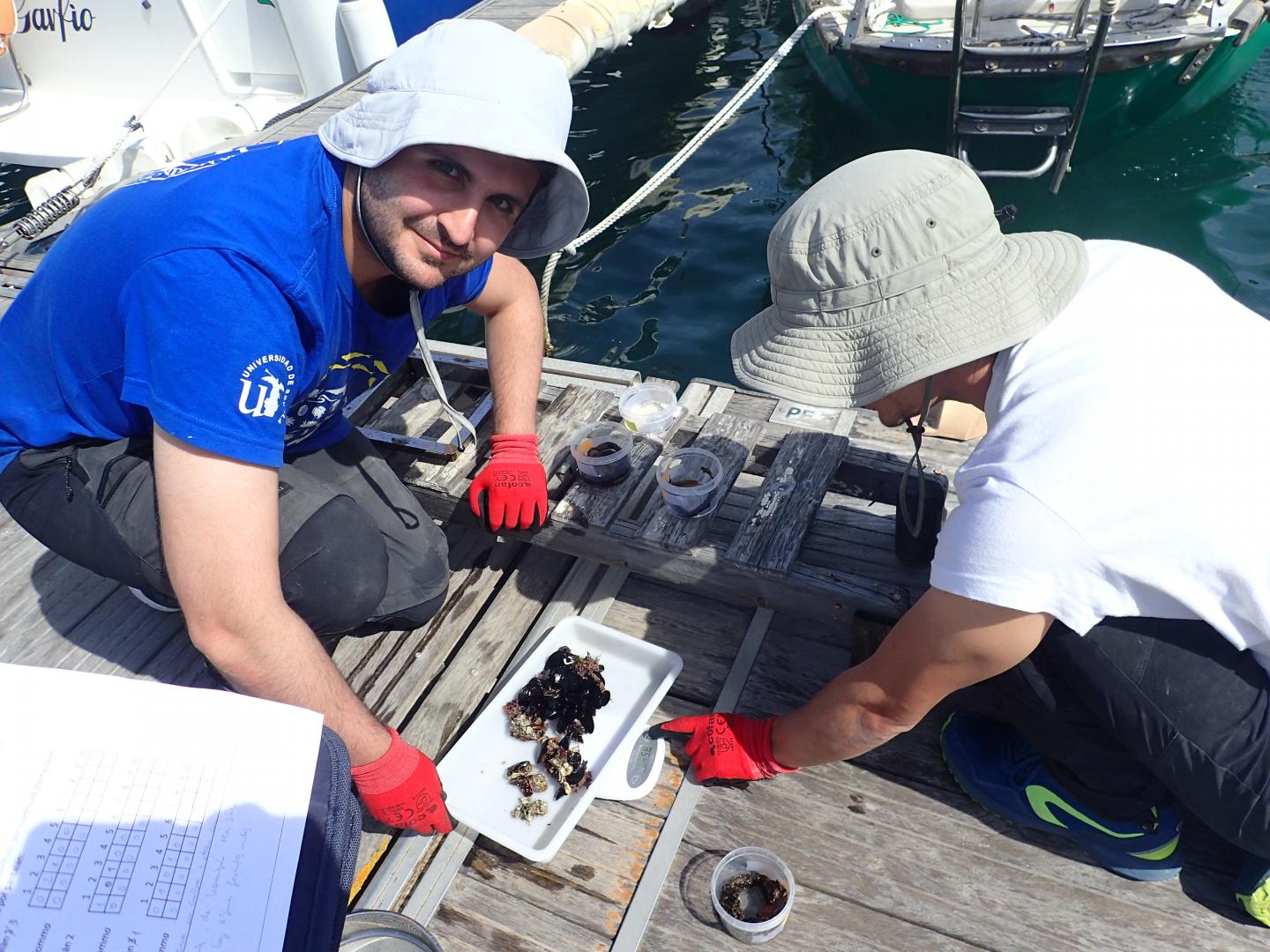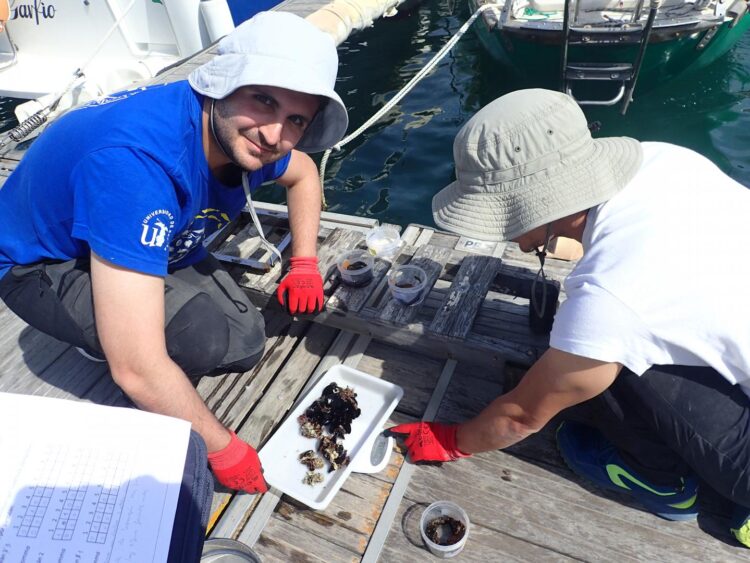
Credit: Universidad de Sevilla
An interdisciplinary group of Spanish scientists, bringing together biologists and chemists from the Universities of Seville, Huelva, the Autonomous University of Madrid and the Institute of Marine Sciences of Andalusia of the CSIC in Cadiz, have just published the results of their pioneering research studying the management of marinas. The group of scientists, led by the US professor José Manuel Guerra García, studied in detail the sediments in Andalusia’s marinas and has proposed a new index, the MEPI (Marinas Environmental Pollution Index) to quantify the level of contamination in these ports.
There has been a proliferation of marinas in recent years, in Spain, other Mediterranean countries and in the rest of the world. Marinas are highly modified ecosystems that have a great impact on marine biota. On the one hand, they alter the area’s hydrodynamism, damming ecosystem in and tending to concentrate pollutants (heavy metals, hydrocarbons, etc.). In addition, recreational boats can be responsible for transporting invasive species from one area to another, attached to the boats’ hulls.
“It is essential to regulate these marinas. To this end, authorities need scientists to provide tools to manage these ecosystems in the best possible way. Ideally, we should try to build more environmentally sustainable ports and aim to establish minimum ecological quality levels enabling us to identify marinas that make efforts to control environmental conditions and make their waters and sediments higher quality than elsewhere”, explains Professor Guerra.
Specifically, the MEPI index is based on parameters such as hydrocarbons, heavy metals, faecal coliforms, nitrogen, phosphorus, sulphur and biocides such as Irgarol, which are used as a base in the manufacture of the antifouling paints applied to prevent organisms from adhering to recreational boats. The MEPI index was developed using national and international sediment quality recommendations and reference values and ranges proposed by legislation in different countries around the world. Together with the new index, the authors have applied a simple and complete ecological analysis method to determine a port’s quality in a holistic and integrated way, taking into account both chemical and biological parameters. For this purpose their models used not only the MEPI, but also values relating to the diversity of organisms living in the sediments, biotic indices measuring the quality of the seabed based on these organisms, and biotic pollution indices based on the number and abundance of invasive species. Thus, communities of organisms living on the bottom of the ports were studied, including both macrofauna (those larger than 0.5 mm such crustaceans, molluscs, annelid worms and echinoderms mainly), and meiofauna (smaller than 0.5 mm, mainly copepods and nematodes).
“These small animals that live in ports are the best ‘whistleblowers’ of port quality, making the role of biologists crucial in understanding how these ecosystems function. Depending on the species we find, we can tell how polluted a port has become,” adds the researcher.
The study’s innovative approach enabled the integration of both environmental parameters, where the role of chemists was key, and biological parameters as part of a holistic model. Based on all the indicators used, the researchers have proposed a total scoring system (the sum of each parameter’s partial score) that allows the ecological quality status of a port to be established using a scale that is easy for authorities to interpret and in line with the European water quality directives. On this basis, colour-coded quality levels can then be established for each marina, ranging from red (very poor quality) to blue (excellent quality).
Thanks to this excellent work, in which the researcher Alejandro Fernández-Romero also participated, and based on the study of the marinas along the Andalusian coast, simple and integrated environmental quality assessment tools are now available for application in any marina anywhere in the world. The information provided can be key, for example, to awarding distinctions, such as the blue flag, to marinas that meet environmental quality requirements. Similarly, Dr. Guerra carried out several studies during his doctoral thesis which demonstrated that the creation of tunnels or hydrodynamic channels in ports, or ports designed with double entrances, such as the port of Ceuta, allow greater water renewal, increase oxygen levels and favour higher levels of biological diversity.
“We must try to move towards ‘eco-sustainable’ designs that minimise the negative impact of creating or remodelling a port. In this sense, both biologists and chemists can contribute invaluable input for engineers, ensuring they opt for coastal infrastructure designs that are more ecological and less harmful to marine flora and fauna”, concludes José Manuel Guerra.
###
Media Contact
Jose Manuel Guerra
[email protected]
Original Source
https:/
Related Journal Article
http://dx.





